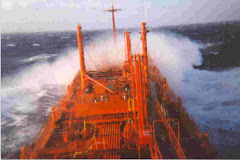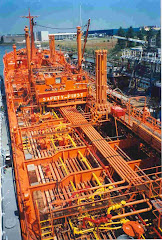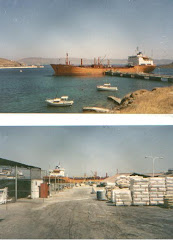Despite looming global recession, the tanker sector has been enjoying a rate boom from the oil price war and failure of OPAC+ to agree on rate cuts. This market boom comes at a time of falling oil demand. The tanker market is being driven by ramped up production. The present large contango in pricing favor physical oil storage, further reducing tanker supply and keeping tanker charter rates very firm.
Many of the major listed tanker companies feel that the tanker industry has entered a new era and will finally be enjoying several years of good earnings. Frontline's MacLeod characteristically sees floating storage as a 'generational' opportunity. What is the incentive for build up oil inventories even with wide contango when oil demand is falling in a looming global recession? Is this bull run sustainable and what are the risks for tanker share investors?
There are substantial risks that this could be another false start for the tanker industry, sooner than later. Even if there are no agreed on cuts in the near future, present production seems so out of proportion to falling oil demand that available storage space is filling up rapidly. There is the risk that at some point, the storage space will be so tight and expensive that production will have to be physically reduced. At that point, the tanker market could become frozen for a period with very little demand for oil transport and refineries drawing off oil stocks.
More likely agreed production cuts will come sooner than later and contango spreads will narrow. Negotiations failed this week 15 because Russia and Saudi Arabia are insisting that non OPEC producers like the US and Brazil join in the production cuts. In the US environment, voluntary production cuts are almost impossible legally. Sooner or later, production cuts seem inevitable. Physical oil storage has never been sustainable over the long run.
Maritime consultancy Marsoft predicted in a recent webinar that a significant oil supply cut of Opec, Russia and nine other producers – also known as the Opec+ group – will end the bull runs in tanker markets from July onwards. Marsoft partner Kavin Hazel estimates that a reduction between 5m barrels per day (bpd) and 10m bpd would pressure tanker rates later this year. This would lead to a much smaller stock buildup and less floating storage. A rise in oil price from production cuts would narrow the contango spreads. Tanker rates would fall back more significantly in the second half of the year with less oil put into the market.
This view was recently seconded by Cleaves Securities, who turned bearish and are projecting that Oil Tanker spot rates plummet in concert with asset and
share prices. Their tentative VLCC spot rate forecast for 2H20E is now only US $ 15k/d, which is extremely low given 4Q represents high-season, in a tanker note yesterday.
The clean sector also faces challenges with dropping oil demand in recessionary environment. The jet fuel market, for example, has collapsed with the fall in air travel. Refineries are trying to change their product output mix to compensate for the collapsing margin spreads in these products. Excess jet fuel can be stored, but unlike crude oil, there is a limited shelf life and the product become off specification and can no longer be used as intended.
At least the tanker markets profitable and building up cash. Other shipping sectors are not so fortunate with container lines and cruise business burning cash and struggling right now. Dry bulk is showing some improvement but just above water at present.
These are complex matters, but the most worrisome presently is falling global oil demand and depth of the coming recession. The timing and shape of a coming global recovery is critical here. It all depends when the quarantines are lifted and how soon we return to normalcy.









No comments:
Post a Comment